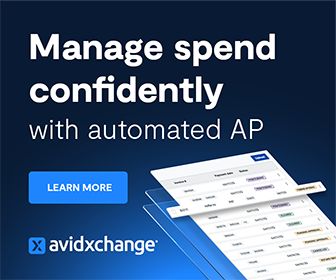Capital expenditures are a balance of risk and reward—risk and reward that has been kicked into overdrive in the past year. Money is tight and many leaders may have seen their capital project plans delayed or changed as a result of the recession. But as a long-term asset built to create value, the right capital investment at the right time and the right price is going to deliver consistency in the long-term.
The Challenges of Capex Gone Wild
When controlled, capital investments can give your company value in the future. When unconstrained, according to the Journal of Accountancy, capex could result in a major impending cash flow squeeze that threatens liquidity and may ultimately threaten a company’s existence.
As noted in the article, capex has a life of its own.
“Even for a large, single expenditure, spending often occurs in smaller amounts over a long period. In addition, capex can consist of many projects, making expenditures harder to capture. Also, smaller capex generally falls under lower spending authority levels. Lastly, capex is frequently less visible because it is buried in subsidiary operations.
While deferring capex is a way to conserve cash, CFOs frequently struggle to identify which capital projects to cut or where to allocate capital. Risk modeling can aid this decision-making process.”
Addressing the Risk: A Five-Step Risk Model
Whether in the midst of the recession or in times of plenty, the right approach can be implemented by even the least effective risk-modeling capabilities. By following the five-step risk model below, companies can minimize risk and maximize value.
Identify the Issues: Know What to Prioritize
What is the most pressing challenge? What’s affecting business operations? What will be disruptive? Being able to answer each of these questions will go a long way in identifying things that may have a significant effect on cash flow.
When looking at capex risk, you need to factor in both internal and external impacts of a decision—external factors such as supply chain functionality is considered equally important to internal impacts like having enough cash. Added to this, you can’t ignore potential impacts on non-monetary factors like impact on employee morale, reputation, and values.
Conduct a Risk Identification and Scenario Analysis
With the potential overarching factors identified, now comes the time to look at the real threats and risks. In this step, your goal is to understand what can go wrong, what will happen if it does go wrong, what kind of impact it will have on you, and what steps you’ll take if things go awry.
“Identifying how something can go wrong allows management to initiate preventive steps now instead of taking corrective actions after a mishap that could result in significant harm.
Scenario analysis is a good approach for identifying risks because it focuses on what might go wrong in the future. Scenario analysis identifies potential events and their possible outcomes and implications to cash and capital requirements.”
Additionally, be sure to check your biases. Confirmation bias, overconfidence, anchoring, and availability bias can each hinder your ability to get a clear picture of the risks, unfortunately creating blind spots.
Dig into the Risks
What will be severe? What will be likely? It’s at this point that Journal of Accountancy recommends creating a risk heat map using severity and likelihood that an identified risk will cause harm.
Understand How You Will React
Risk mitigation is the act of taking actions to reduce the financial impact of risks or the probability of their occurrence. Action examples include improving process efficiency, increasing reliability, improving data quality, lowering operational costs, and eliminating capital investment.
Knowing how you will approach each risk and what potential tradeoffs will come as a result of your actions is vital. Depending on your conclusions and risk tolerance, taking the steps before footing the bill will go a long way in helping you maintain your trajectory.
Act on Your Analysis
Knowing the risks, alternatives, and potential benefits, step five is to act. This is a time where decisiveness matters, and with the right information, you can set yourself up for success.
Leading Confidently, Mitigating Risk
As a controller, you’ve spent a lot of time in the past year putting out fires and keeping the company moving forward. If you’re like many, the past decade has helped make you more strategic and increased your focus on long-term value creation.
But one low risk, high reward investment? Joining the Controllers Council. We launched the Controllers Council as a community and forum for controllers across the US to discuss and benchmark against similar companies. With just a small annual investment, you can join the discussion and get a lot more benefits along the way. Ready to learn more? Click here to read all the membership benefits.
Additional Resources




